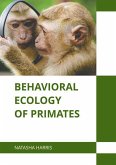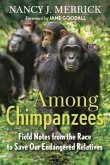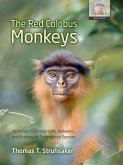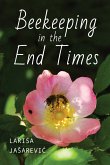Predator sensitive foraging represents the strategies that animals employ to balance the need to eat against the need to avoid being eaten. Ecologists working with a wide range of taxa have developed sophisticated theoretical models of these strategies, and have produced elegant data to test them. However, only recently have primatologists begun to turn their attention to this area of research. This volume brings together primary data from a variety of primate species living in both natural habitats and experimental settings, and explores the variables that may play a role in primates' behavioural strategies. Taken together, these studies demonstrate that predator sensitive foraging is relevant to many primates, of various body sizes and group sizes and living in different environments. Eat or be Eaten encourages further discussion and investigation of the subject. It will make fascinating reading for researchers and students in primatology, ecology and animal behaviour.
Table of contents:
Preface; 1. An introduction to predator sensitive foraging Lynne E. Miller; Part I. Biological Variables: 2. Dangers in the dark: are some nocturnal primates afraid of the dark? Simon K. Bearder, K. A. I. Nekaris and Courtney A. Buzzell; 3. Predation sensitive foraging in captive tamarins Mark J. Prescott and Hannah M. Buchanan-Smith; 4. Seeing red: consequence of individual differences in color vision in callitrichid primates Nancy G. Caine; 5. Predator sensitive foraging in Thomas langurs Elisabeth H. M. Sterck; Part II. Social Variables: 6. The role of group size in predator sensitive foraging decisions for wedge-capped capuchin monkeys (Cebus olivaceous) Lynne E. Miller; 7. Group size effects on predation sensitive foraging in wild ring-tailed lemurs (Lemur catta) Michelle L. Sauther; 8. Species differences in feeding in Milne Edward's sifakas (Propithecus diadema edwardsi), rufus lemurs (Eulemur fulvus rufus) and red-bellied lemurs (Eulemur rubriventer) in southeastern Madagascar: implications for predator avoidance Deborah J. Overdorff, Suzanne G. Strait and Ryan G. Seltzer; 9. Evidence of predator sensitive foraging and traveling in single- and mixed-species tamarin troops Paul A. Garber and Julio Cesar Bicca-Marques; 10. Predator (in)sensitive foraging in sympatric female vervets (Chlorocebus aethiops) and patas monkeys (Erythrocebus patas): a test of ecological models of group dispersion Lynne A. Isbell and Karen L. Enstam; 11. Predation risk and anti-predator adaptions in white-faced sakis (Pithecia pithecia) Terrence M. Gleason and Marilyn A. Norconk; Part III. Environmental Variables: 12. Foraging female baboons exhibit similar patterns of antipredator vigilance across two populations Russell A. Hill and Guy Cowishaw; 13. Foraging and safety in adult female blue monkeys in the Kakamega Forest, Kenya Marina Cords; 14. Predicting predation risk for foraging arboreal monkeys Adrian Treves; 15. Predator sensitive foraging in ateline primates Anthony Di Fiore; 16. Anti-predatory behaviour in gibbons (Hylobates lar, Yai/Thailand) Nicola L. Uhde and Volker Sommer.
Predator sensitive foraging is about balancing the need to eat against the need to avoid being eaten. Eat or be Eaten explores all the available information from fieldwork and the laboratory to broaden our understanding of this complex but fascinating field.
Edited work on behavioural strategies of primates in foraging for food, and avoiding being eaten.
Table of contents:
Preface; 1. An introduction to predator sensitive foraging Lynne E. Miller; Part I. Biological Variables: 2. Dangers in the dark: are some nocturnal primates afraid of the dark? Simon K. Bearder, K. A. I. Nekaris and Courtney A. Buzzell; 3. Predation sensitive foraging in captive tamarins Mark J. Prescott and Hannah M. Buchanan-Smith; 4. Seeing red: consequence of individual differences in color vision in callitrichid primates Nancy G. Caine; 5. Predator sensitive foraging in Thomas langurs Elisabeth H. M. Sterck; Part II. Social Variables: 6. The role of group size in predator sensitive foraging decisions for wedge-capped capuchin monkeys (Cebus olivaceous) Lynne E. Miller; 7. Group size effects on predation sensitive foraging in wild ring-tailed lemurs (Lemur catta) Michelle L. Sauther; 8. Species differences in feeding in Milne Edward's sifakas (Propithecus diadema edwardsi), rufus lemurs (Eulemur fulvus rufus) and red-bellied lemurs (Eulemur rubriventer) in southeastern Madagascar: implications for predator avoidance Deborah J. Overdorff, Suzanne G. Strait and Ryan G. Seltzer; 9. Evidence of predator sensitive foraging and traveling in single- and mixed-species tamarin troops Paul A. Garber and Julio Cesar Bicca-Marques; 10. Predator (in)sensitive foraging in sympatric female vervets (Chlorocebus aethiops) and patas monkeys (Erythrocebus patas): a test of ecological models of group dispersion Lynne A. Isbell and Karen L. Enstam; 11. Predation risk and anti-predator adaptions in white-faced sakis (Pithecia pithecia) Terrence M. Gleason and Marilyn A. Norconk; Part III. Environmental Variables: 12. Foraging female baboons exhibit similar patterns of antipredator vigilance across two populations Russell A. Hill and Guy Cowishaw; 13. Foraging and safety in adult female blue monkeys in the Kakamega Forest, Kenya Marina Cords; 14. Predicting predation risk for foraging arboreal monkeys Adrian Treves; 15. Predator sensitive foraging in ateline primates Anthony Di Fiore; 16. Anti-predatory behaviour in gibbons (Hylobates lar, Yai/Thailand) Nicola L. Uhde and Volker Sommer.
Predator sensitive foraging is about balancing the need to eat against the need to avoid being eaten. Eat or be Eaten explores all the available information from fieldwork and the laboratory to broaden our understanding of this complex but fascinating field.
Edited work on behavioural strategies of primates in foraging for food, and avoiding being eaten.







